So Village in Cong Hoa Commune, Quoc Oai District, Hanoi is well-known for its communal house which is considered “the most beautiful one in the ancient area of Doai”.
The area of Doai refers to the former province of Son Tay (present-day Son Tay Town), one of 13 provinces founded earliest in the North in 1831. The land covers the whole area of Vinh Phuc Province, the northern part of Phu Tho Province, a part of Tuyen Quang Province and present-day Hanoi.
Although the name, Xu Doai, is no longer used, the area still preserves hundreds of ancient communal houses. Among them, the 350 year-old ancient communal house of So Village is ranked first and has an important position in the ancient architectural treasure of the North.
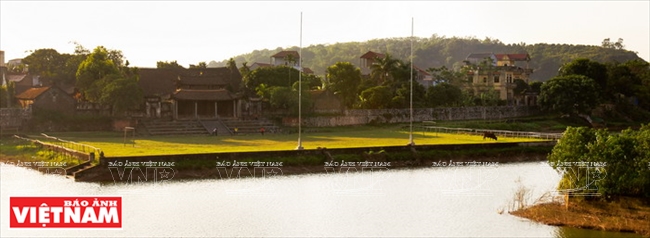
So Village in Cong Hoa Commune, Quoc Oai District, Hanoi.
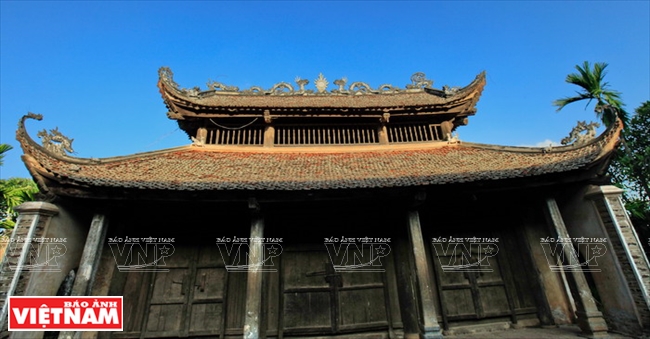
The three-passage gate.
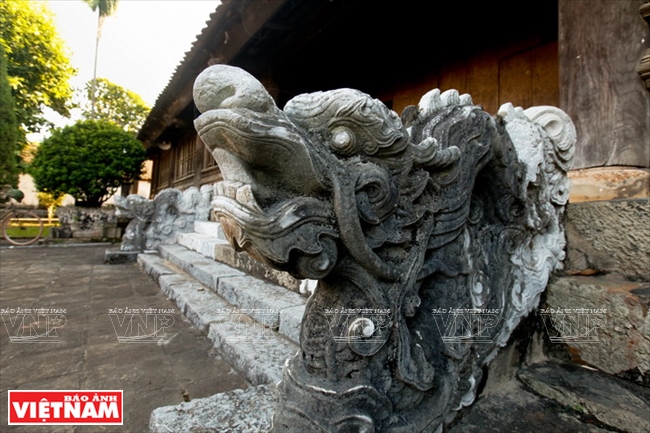
Stone dragons on the stairs of the communal house.
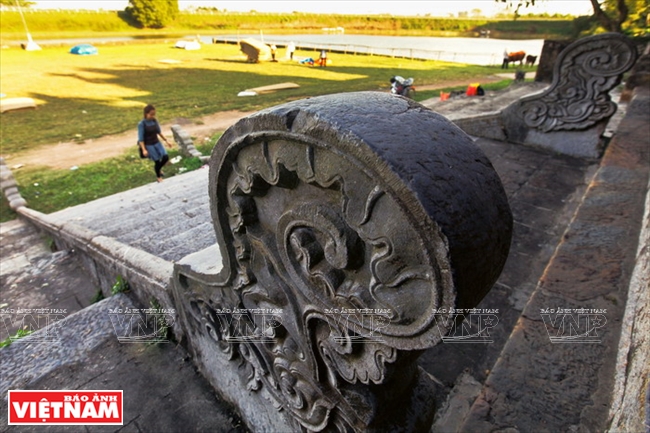
18 stone stairs to the three-passage gate.
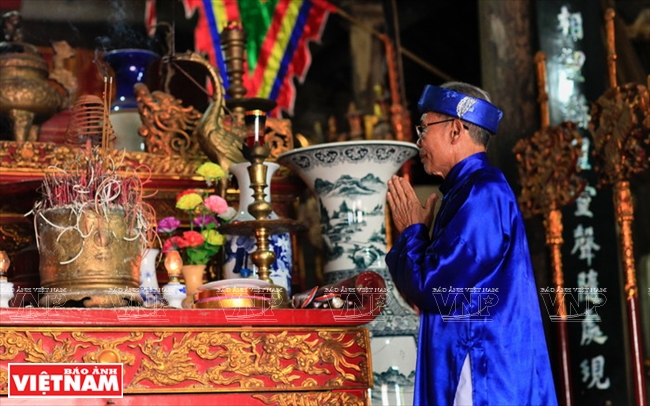
The communal house worships three generals who helped King Dinh Tien Hoang
fight against 12 independent feudal warlords for control of the country.
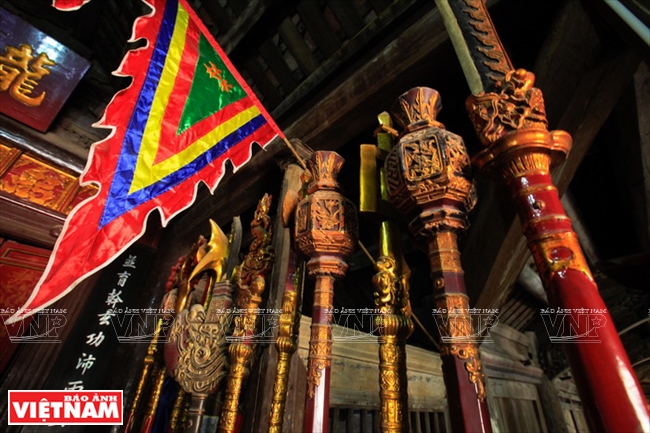
The set of imperial equipages inside the main chamber of So Communal House.
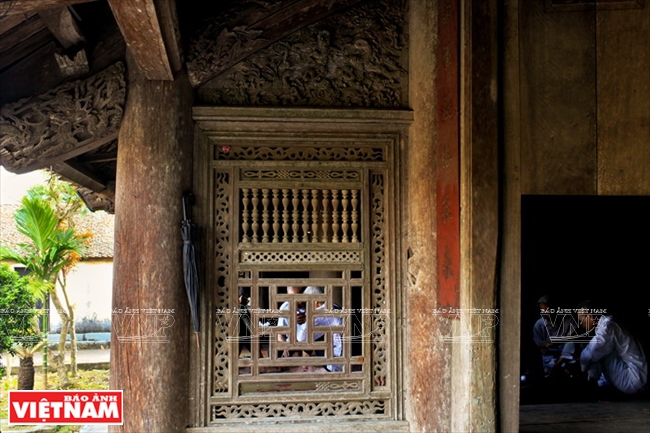
Delicate patterns carved in wooden components of the communal house.
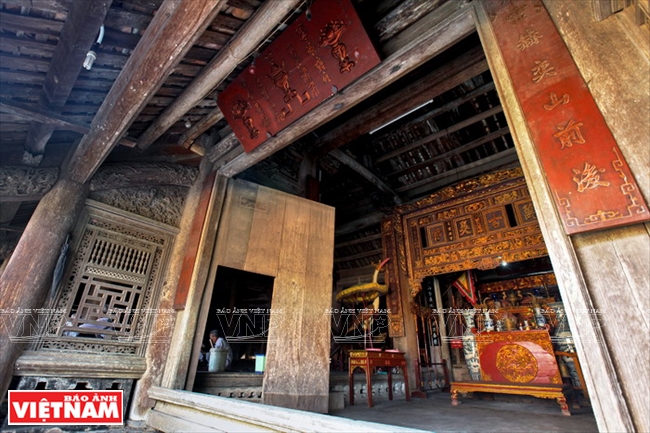
The door to the main chamber of So Communal House.

Part of the So Communal House’s roof.
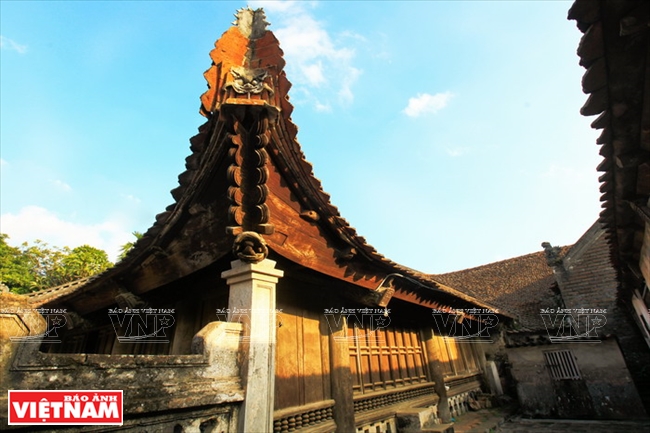
A curved knife-shaped corner of the communal house’s roof.
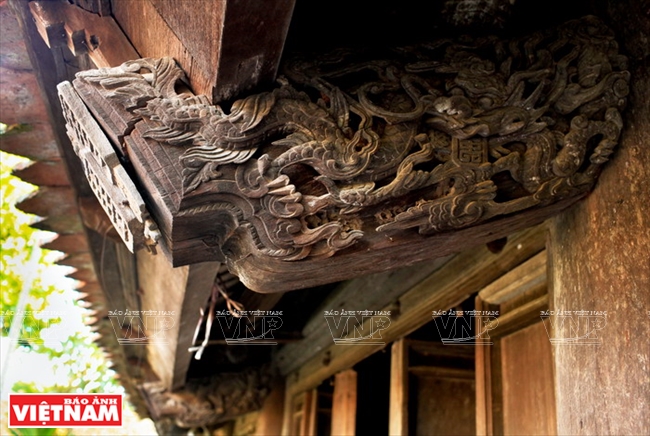
Dragon and phoenix patterns at the communal house.
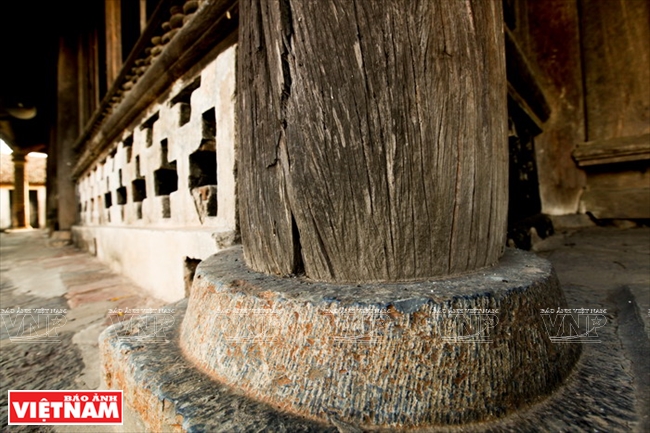
The communal house has 64 iron wood pillars with stone foots.

350 year-old iron wood doors on three faces of the communal house.

Delicate patterns carved in wooden components of the communal house. |
|
So Communal House is the place where villagers in Cong Hoa Commune annually held their three large festivals, including the largest village festival on February 8-11 of the lunar calendar.. |
So Communal House is highly appreciated and recognised by experts as the epitome in terms of architecture. It is used for worshipping three generals who helped King Dinh Tien Hoang to fight against 12 independent feudal warlords for control of the country (in the mid 10th century).
No one knows exactly when So Communal House was built. According to a book entitled “Son Tay tinh dia chi” (Son Tay Province’s Monograph) by Pham Xuan Do published in 1941, the communal house was upgraded in 1673 under the King Le Gia Tong’s Dynasty, whereas the epitaph called “Tu sang Hoa dinh bi ky” engraved in the 3rd year of Duong Duc (1674) at the communal house says that the communal house was upgraded in the year of Quy Mao (1663). Over the years, the communal house has undergone four restorations; in 1743, 1924, 1928 and 1953.
The communal house was built with the architecture of “noi cong ngoai quoc” (the internal shape looks like the Chinese character “gong” and the external shape looks like the Chinese character “quo”) on an area of 1,100m2.
Despite the destruction over time, the communal house still keeps intact its delicate and ancient architectural features. It overlaps the Rua Mountain and faces the dam of the Day River that looks like a semicircle lake.
To get to the communal house, visitors walk through the three-passage gate which has two floors, three compartments and four roofs. All patterns on the gate were delicately carved, especially the image of two dragons flanking the moon on the roof and four sacred animals at the wooden pillars’ foot. The communal house has seven compartments, two lean-tos, 32 pillars of iron wood in six horizontal lines and an ironwood floor. The main chamber is seen behind an alter of the three generals of the Cao family.
Today, the communal house still displays 40 jarligs from the 2nd year of Hoang Dinh (1601), the Le Dynasty, to the 9th year of Khai Dinh (1924), the Nguyen Dynasty and ancient parallel sentences.
With great architectural and historical values, So Communal House was recognised by the Ministry of Culture-Sports and Tourism as a national relic .
Story: Thao Vy - Photos: Viet Cuong